Before Lake Michigan, there was michigami
When the French explorers Marquette and Joliet first reached the shores of this breathtaking natural treasure, they asked the native people they encountered what the lake was called.
Their response was, “michigami.”
In the original Ojibwe, it means “Great Water.”
Now, more than three centuries later, a groundbreaking new water supply program is poised to translate michigami into great water again… this time for the people of Waukesha, Wisconsin.

The City of Waukesha had a clear objective when it began investigating alternatives to its increasingly depleted groundwater supply more than a decade ago: Identify the single most sustainable and environmentally responsible option.
Lake Michigan won. And thanks to the Great Water Alliance, it will continue to win for generations to come.
From 14 Alternatives
down to one obvious choice.
down to one obvious choice.
The process of identifying a sustainable water source for the City of Waukesha began over a decade ago, and included a thorough investigation of more than a dozen options. Ultimately, the eight governors of the Great Lakes-St. Lawrence River Water Resources Compact Council unanimously approved Waukesha’s proposal to use and return Lake Michigan water under the Great Lakes Compact.
The key findings of the approval make it obvious why Lake Michigan was the wisest choice, both for the citizens of Waukesha and the Great Lakes Basin:
“Approximately 100% of the volume withdrawn from the Basin will be returned via flow through the Root River, a tributary of the Basin. This effectively results in no net loss of water volume to the Basin.”
“The deep aquifer groundwater supply is hydrologically connected to waters of the Basin. Continued use of that aquifer draws groundwater away from the Basin” without being returned.
“None of the evaluated alternatives were found to be reliable sources for a long-term, dependable, and sustainable public water supply and, therefore, the Applicant is without a reasonable water supply alternative” to Lake Michigan water.
“Approving a diversion of Great Lakes water with return flow will result in a net increase of water in the Lake Michigan watershed.”
“The Applicant’s deep aquifer wells draw from an aquifer that is part of a regional aquifer system where withdrawals have exceeded the natural recharge rate.”
“The Applicant’s wells in the deep aquifer are in a confined aquifer which restricts recharge and contributes to groundwater decline.”
“The Applicant’s deep aquifer wells also have total combined radium … concentrations that are above the Safe Drinking Water Act standard.”
Approval will “eliminate the introduction of radium into the environment.”
“The groundwater depletion, along with the radium concentration issue, demonstrates that the deep aquifer is not a sustainable or safe source of water for the people served by the Applicant.”
“The proposed Exception cannot be reasonably avoided through the efficient use and conservation of existing water supplies and the Exception will be implemented to incorporate environmentally sound and economically feasible water conservation measures to minimize water withdrawals.”
The return flow will benefit a Basin tributary, the Root River…Increased flow will result in an improvement of the fishery and benefits to the Basin salmonid egg collection facility located downstream on the Root River.”
Waukesha must monitor the Root River “in order to adapt future return flow to minimize potential adverse impacts or maximize potential benefits.”
“The Applicant must implement a comprehensive pharmaceutical and personal care products recycling program and continually use the best available methods to encourage the further reduction of such products into the wastewater as recommended by the Originating Party.”
Waukesha’s “high quality” wastewater treatment includes “removal of chemical phosphorus, suspended solids and associated contaminants, as well as organic materials; tertiary filtration; and, ultraviolet light disinfection. The proposed phosphorus permit limits are well below the water quality standard for the Root River and are on an order of magnitude lower than many existing dischargers to the Basin.”

Actually, it’s much closer to a teaspoon in an Olympic-size swimming pool.
The plain truth is that the Great Water Alliance’s impact on Lake Michigan’s water level won’t be minimal.
It will be nonexistent.
That’s because we’re required by the terms of our approved application to return approximately 100% of the volume “borrowed” from the lake, each and every year, in perpetuity. And we’re not about to make waves.
let’s be clear.
Better water. Better watershed.
The Great Water Alliance won’t just provide improved drinking water for the City of Waukesha. It will also lead to a more ecologically stable and environmentally sustainable Lake Michigan Basin.
Once implemented, we’ll play a part in helping groundwater remain in the Great Lakes Basin instead of being diverted to the Mississippi, thereby benefiting area wetlands and wildlife.
approval
Waukesha’s application for an exception to the Great Lakes Compact was subjected to incredibly rigorous scientific vetting. As a result, the terms of this approval have set a high bar for future communities in straddling counties wishing to plead a similar case.
After such a long and arduous journey, the Great Water Alliance understands that we owe it to citizens, the environment, and our partner communities to get this right.
Any notion that allowing Waukesha to borrow and return Great Lakes water will open the floodgates to other communities suddenly pulling water from the lakes is unfounded. Because of our unique location and circumstances, Waukesha is one of a few communities that may fall within the exceptions provided under the Great Lakes Compact.
For additional supplemental information, you can visit the Wisconsin DNR and the Great Lakes Compact Council websites.
